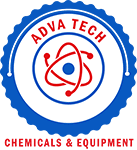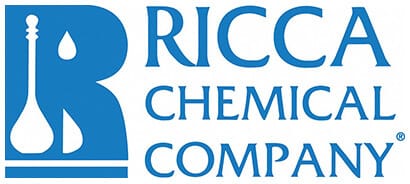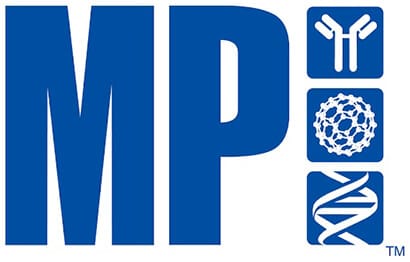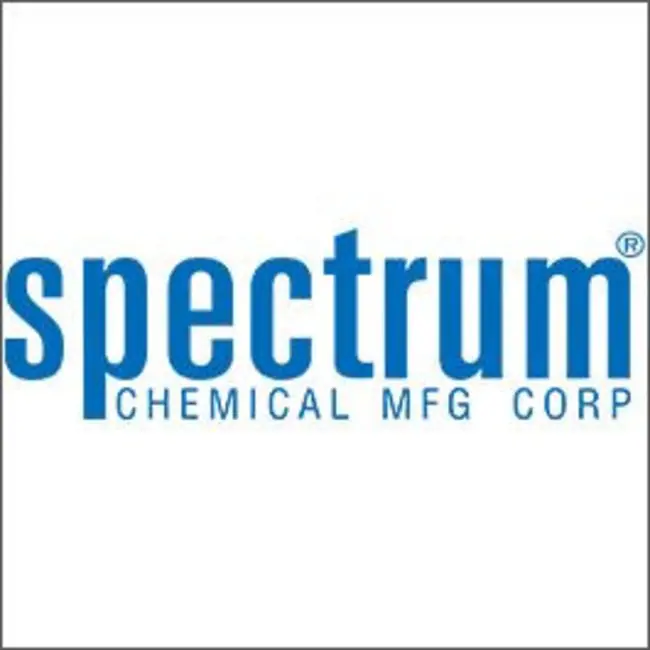Showing 27451–27500 of 33980 results
-
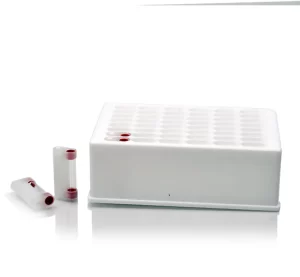
Thermo Scientific™ Rapid Equilibrium Dialysis (RED) Inserts and Plates
$273.70 Add to cart View Product DetailsRapid Equilibrium Dialysis (RED) Devices have been widely adopted as an effective in vitro technique for conducting plasma protein binding (PPB) assays in drug development. This measurement is used to assess the biological availability of drug candidates and guides critical downstream decisions such as drug design, in vivo testing prioritization, and drug-drug interaction evaluation. RED Devices were developed through close collaboration with the pharmaceutical industry, ensuring that they meet the highest standards of accuracy and reliability in equilibrium dialysis testing.
Equilibrium dialysis is commonly used in drug-plasma protein binding (PPB) studies to quantitate the free fraction of drugs in plasma. The binding of drugs to plasma proteins is a critical factor that affects their pharmacokinetics and pharmacodynamics, as only the free fraction of a drug can exert a physiological effect. The Thermo Scientific Pierce Rapid Equilibrium Dialysis (RED) Device is a superior method for conducting this analysis because it delivers accurate and consistent data with shorter preparation and dialysis times.
RED Devices use a size-defined dialysis membrane to quantitate the amount of free (active) drug molecules that are not bound to plasma proteins. They consist of disposable inserts and a base plate with a standard microplate footprint. The inserts are made of two side-by-side chambers separated by a dialysis membrane and are used along with a required base plate or are available as single-use plates with Inserts. Competition RED Devices are also available to enable competitive dialysis experiments with multiple tissue or protein fluid samples.
Features of RED Devices include:
• Ease of use—disposable tubes do not require presoaking, assembly, or specialized equipment
• Rapid dialysis—high surface-to-volume ratio of the membrane enables equilibrium in 2–4 hours
• High-throughput—96-well footprint is suitable for automation
• Multi-sample processing—can be used for 1–48 assays/plate without wasting an entire plate
• Robustness—compartmentalized design eliminates the potential for cross-contamination or leakage
• Reproducibility and accuracy—validated for plasma protein binding assays, producing results consistent with those reported in the literature
• Flexible format—available in pre-inserted disposable polypropylene plates and packs of individual insertsIn addition to plasma protein binding, the device is used for determining drug partitioning between red blood cells and plasma, protein binding of liver microsomes to improve the correlation between in vitro and in vivo intrinsic clearance, drug metabolism and pharmacokinetics (DMPK) assays, and competition between tissue protein binding against plasma proteins.
RED Device Inserts, 8K MWCO
Pierce RED Device Inserts are designed for use with a required base plate for equilibrium dialysis experiments. Each single-use, disposable insert is made of two side-by-side chambers separated by an O-ring-sealed vertical cylinder of dialysis membrane (8K MWCO) validated for minimal nonspecific binding. They are available in packs of 50 or 250 each and are useful for testing a variable number of samples per run.RED Device Base Plates
Pierce RED Device Inserts are used with either the RED Device Reusable Base Plate made of high-grade PTFE (Teflon™) or the RED Device Single-Use Base Plate made of high-density polypropylene. The Single-Use Base Plate is disposable and lightweight, allowing routine automation. Each Base Plate holds up to 48 RED Device Inserts and has a standard 96-well plate footprint with 9 x 9 mm well spacing for compatibility with multichannel pipettors and automated liquid handling systems.RED Device Single-Use Plate with Inserts, 8K or 12K MWCO
The RED Device Single-Use Plate with Inserts is composed of disposable high-density polypropylene and comes preloaded with 48 equilibrium dialysis membrane inserts. Each insert includes two side-by-side chambers separated by an O ring sealed vertical cylinder of dialysis membrane (8K or 12K MWCO). The device is automation-friendly and has a standard 96-well plate footprint with 9 x 9 mm well spacing. The single-use plate is easily disposed of to avoid contamination and cleaning, making it useful when performing PPB assays with radioactive or hazardous materials.Competition RED Device Inserts and Base Plate, 12K MWCO
The Pierce Competition RED Device facilitates the analysis of simultaneous drug interactions and partitioning among multiple tissues to accurately model in vivo drug interactions. The system consists of disposable dialysis tube inserts (12K MWCO) and a reusable base plate made of chemically inert high-grade PTFE, eliminating non-specific binding and risk of contamination. The base plate is divided into different size chambers for positioning 2–8 RED Device Inserts per well, enabling competitive dialysis experiments with 2–15 separate tissue or protein fluid samples. Each Competition RED Insert contains either one or two separate dialysis chambers (each package includes both types).Applications of the Competition RED Devices include:
• ADME-Tox studies: in vitro screening of drug partitioning between plasma and multiple tissues before in vivo studies with animal models
• Determine formulation of drug dosage for in vivo studies
• Drug-drug interaction studies
• Competitive binding and dissociation constant determination for small molecules versus multiple targets -
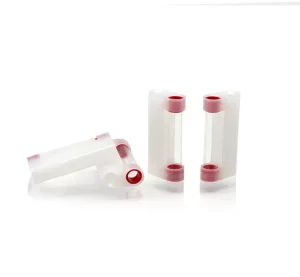
Thermo Scientific™ Rapid Equilibrium Dialysis (RED) Inserts and Plates
$2,846.25 Add to cart View Product DetailsRapid Equilibrium Dialysis (RED) Devices have been widely adopted as an effective in vitro technique for conducting plasma protein binding (PPB) assays in drug development. This measurement is used to assess the biological availability of drug candidates and guides critical downstream decisions such as drug design, in vivo testing prioritization, and drug-drug interaction evaluation. RED Devices were developed through close collaboration with the pharmaceutical industry, ensuring that they meet the highest standards of accuracy and reliability in equilibrium dialysis testing.
Equilibrium dialysis is commonly used in drug-plasma protein binding (PPB) studies to quantitate the free fraction of drugs in plasma. The binding of drugs to plasma proteins is a critical factor that affects their pharmacokinetics and pharmacodynamics, as only the free fraction of a drug can exert a physiological effect. The Thermo Scientific Pierce Rapid Equilibrium Dialysis (RED) Device is a superior method for conducting this analysis because it delivers accurate and consistent data with shorter preparation and dialysis times.
RED Devices use a size-defined dialysis membrane to quantitate the amount of free (active) drug molecules that are not bound to plasma proteins. They consist of disposable inserts and a base plate with a standard microplate footprint. The inserts are made of two side-by-side chambers separated by a dialysis membrane and are used along with a required base plate or are available as single-use plates with Inserts. Competition RED Devices are also available to enable competitive dialysis experiments with multiple tissue or protein fluid samples.
Features of RED Devices include:
• Ease of use—disposable tubes do not require presoaking, assembly, or specialized equipment
• Rapid dialysis—high surface-to-volume ratio of the membrane enables equilibrium in 2–4 hours
• High-throughput—96-well footprint is suitable for automation
• Multi-sample processing—can be used for 1–48 assays/plate without wasting an entire plate
• Robustness—compartmentalized design eliminates the potential for cross-contamination or leakage
• Reproducibility and accuracy—validated for plasma protein binding assays, producing results consistent with those reported in the literature
• Flexible format—available in pre-inserted disposable polypropylene plates and packs of individual insertsIn addition to plasma protein binding, the device is used for determining drug partitioning between red blood cells and plasma, protein binding of liver microsomes to improve the correlation between in vitro and in vivo intrinsic clearance, drug metabolism and pharmacokinetics (DMPK) assays, and competition between tissue protein binding against plasma proteins.
RED Device Inserts, 8K MWCO
Pierce RED Device Inserts are designed for use with a required base plate for equilibrium dialysis experiments. Each single-use, disposable insert is made of two side-by-side chambers separated by an O-ring-sealed vertical cylinder of dialysis membrane (8K MWCO) validated for minimal nonspecific binding. They are available in packs of 50 or 250 each and are useful for testing a variable number of samples per run.RED Device Base Plates
Pierce RED Device Inserts are used with either the RED Device Reusable Base Plate made of high-grade PTFE (Teflon™) or the RED Device Single-Use Base Plate made of high-density polypropylene. The Single-Use Base Plate is disposable and lightweight, allowing routine automation. Each Base Plate holds up to 48 RED Device Inserts and has a standard 96-well plate footprint with 9 x 9 mm well spacing for compatibility with multichannel pipettors and automated liquid handling systems.RED Device Single-Use Plate with Inserts, 8K or 12K MWCO
The RED Device Single-Use Plate with Inserts is composed of disposable high-density polypropylene and comes preloaded with 48 equilibrium dialysis membrane inserts. Each insert includes two side-by-side chambers separated by an O ring sealed vertical cylinder of dialysis membrane (8K or 12K MWCO). The device is automation-friendly and has a standard 96-well plate footprint with 9 x 9 mm well spacing. The single-use plate is easily disposed of to avoid contamination and cleaning, making it useful when performing PPB assays with radioactive or hazardous materials.Competition RED Device Inserts and Base Plate, 12K MWCO
The Pierce Competition RED Device facilitates the analysis of simultaneous drug interactions and partitioning among multiple tissues to accurately model in vivo drug interactions. The system consists of disposable dialysis tube inserts (12K MWCO) and a reusable base plate made of chemically inert high-grade PTFE, eliminating non-specific binding and risk of contamination. The base plate is divided into different size chambers for positioning 2–8 RED Device Inserts per well, enabling competitive dialysis experiments with 2–15 separate tissue or protein fluid samples. Each Competition RED Insert contains either one or two separate dialysis chambers (each package includes both types).Applications of the Competition RED Devices include:
• ADME-Tox studies: in vitro screening of drug partitioning between plasma and multiple tissues before in vivo studies with animal models
• Determine formulation of drug dosage for in vivo studies
• Drug-drug interaction studies
• Competitive binding and dissociation constant determination for small molecules versus multiple targetsRED Device Insert Removal Tool
This tool enables fast removal of 8 inserts at once. -
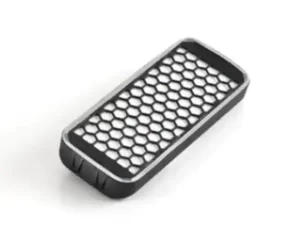
Thermo Scientific™ Replacement HEPA Filter
$205.18 Add to cart View Product DetailsHelp ensure measurable Class 10 air quality performance with Thermo Scientific™ Replacement HEPA Filters and Cleaning Kits.
HEPA Filters
-
- 99.97% filtering at 0.3µm
n
-
- Compatible with all Thermo Scientific™ Forma™ Series II 3110, Thermo Scientific™ Steri-Cycle™, and Forma™ 310 Series (with HEPA filtration system option) incubators
n
-
- Main chamber filter available as a stand-alone or packaged in a group with the other chamber in-line filters
n
Decontamination Kits
-
- n
- Consists of filters for difficult-to-clean chambers and gaskets (except door) and tubing
n
-
- Reduces downtime and labor spent on decontamination
n
-
-
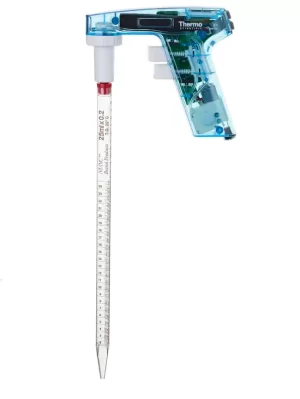
Thermo Scientific™ S1 Pipet Fillers SKU: 9521
$575.43 Add to cart View Product DetailsCarry out longer, fatigue-free pipetting with the Thermo Scientific™ S1 Pipette Fillers. These instruments are ergonomically designed and offer simple, efficient pipetting performance, as well as maximum pipetting comfort. Lightweight and cordless, they feature a heavy-duty rechargeable lithium-ion battery that allows approximately three times longer operation between charges than typical units. For use with graduated and volumetric glass and plastic serological pipets. Monitor Performance
-
- Large, backlit LCD display provides visual confirmation of remaining battery charge and speed settings
n
nControl Speedn
-
- n
- Separate aspirate and dispense speed controls provide precise control over pipetting speeds and reduce risk of overpipetting with smaller pipets
n
-
- Choose from eight speeds with a simple “+” or “-” to adjust pipetting speed which is displayed on the LCD
n
nReady When You Need Itn
-
- n
- Rechargeable lithium-ion battery offers long runtime per charge while eliminating battery memory problems
n
-
- Battery has rapid charge rate of 80% in one hour and delivers up to 15 hours of continuous operation before recharge
n
n
Warranty and Services
n
2-years with web registration
-
-
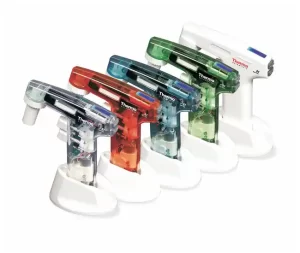
Thermo Scientific™ S1 Pipet Fillers SKU: 9541
$578.23 Add to cart View Product DetailsCarry out longer, fatigue-free pipetting with the Thermo Scientific™ S1 Pipette Fillers. These instruments are ergonomically designed and offer simple, efficient pipetting performance, as well as maximum pipetting comfort. Lightweight and cordless, they feature a heavy-duty rechargeable lithium-ion battery that allows approximately three times longer operation between charges than typical units. For use with graduated and volumetric glass and plastic serological pipets.
-
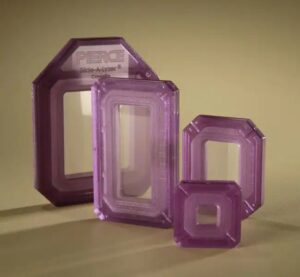
Thermo Scientific™ Slide-A-Lyzer™ Dialysis Cassettes, 20K MWCO
$162.15 Add to cart View Product DetailsSlide-A-Lyzer Dialysis Cassettes (20K MWCO) facilitate the simple and effective removal of buffer salts and small contaminants from proteins and other macromolecules larger than 20,000 Daltons. They are available in four sizes to accommodate sample volumes between 0.5 and 30 mL. These devices are easier to use than traditional dialysis tubing, providing faster buffer exchange, and more complete sample recovery.
nSlide-A-Lyzer Dialysis Cassettes (20K MWCO) facilitate the simple and effective removal of buffer salts and small contaminants from proteins and other macromolecules larger than 20,000 Daltons. They are available in four sizes to accommodate sample volumes between 0.5 and 30 mL. These devices are easier to use than traditional dialysis tubing, providing faster buffer exchange and more complete sample recovery. Slide-A-Lyzer cassettes can be used for a wide range of applications including low-molecular weight contaminant removal, buffer exchange, desalting, equilibrium dialysis, and sample concentration. Liquid samples are easily added and removed by penetrating the self-sealing gasket with a hypodermic needle attached to a syringe. No knots, clips, or caps are needed to seal the units and prevent leaking and sample-loss during the dialysis procedure.
Slide-A-Lyzer Dialysis Cassettes are constructed from two sheets of low-binding, regenerated-cellulose dialysis membrane that are hermetically sealed on either side of a silicone-like gasket inside an inert plastic frame. The membrane and cassette materials are compatible with most common laboratory chemicals and buffers.
Features of Slide-A-Lyzer Dialysis Cassettes:
• Easy to use—no knots or clamps are needed; just inject sample into cassette and begin dialysis
• Fast dialysis—flat cassette chamber with two membranes provides high surface-area to volume ratio that maximizes diffusion rate compared to cylindrical dialysis tubing
• High recovery—rectangular cassette design maximizes recovery of entire sample volume via any one of the four corner injection ports
• Four cassette sizes—select the cassette that best suits your sample volume
• Color-coded—purple cassette frame specifies cassettes with the 20,000 MW pore size membrane
Membrane specifications:
• Composition: regenerated cellulose synthesized by the Viscose method
• Thickness: 0.9 to 1.2 mil (22.5 to 30 µm)
• Hydration time required before use: 2 minutes
• Glycerol content: none
• Sulfur content: 0.04%
• Heavy metals content: trace
Volume ranges:
• 0.5 mL = 0.1 to 0.5 mL
• 3 mL = 0.5 to 3 mL
• 12 mL = 3 to 12 mL
• 30 mL = 12 to 30 mL -
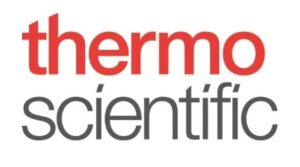
Thermo Scientific™ Stop Solution for TMB Substrates
$140.50 Add to cart View Product DetailsThermo Scientific™ Pierce Stop Solution for TMB is 0.16M sulfuric acid for use with the ELISA substrate 3,3«,5,5« – tetramethylbenzidine (TMB).
nTMB Stop Solution is 0.16M sulfuric acid for use with the ELISA substrate 3,3«,5,5«-tetramethylbenzidine (TMB). Addition of sulfuric acid stop solution changes the color from blue to yellow, stabilizing the color development to enable accurate measurement of the intensity at 450nm using a spectrophotometer or plate reader.
-
- Size: 55mL
n
-
- Sufficient For: five 96-well microplates
n
-
- Application: ELISA
n
Instructions: Following TMB incubation, add an amount of stop solution equal to the amount of TMB substrate added to each well of the ELISA plate (typically 50 to 100µL per well). Use at full strength.
-
-
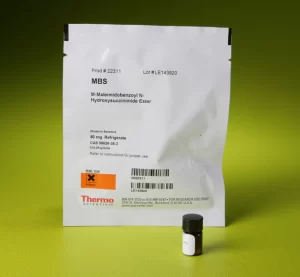
Thermo Scientific™ Sulfo-EMCS (N-ε-maleimidocaproyl-oxysulfosuccinimide ester)
$456.55 Add to cart View Product DetailsThermo Scientific™ Pierce Sulfo-EMCS is a water-soluble amine-to-sulfhydryl crosslinker that contains NHS-ester and maleimide reactive groups at opposite ends of a medium-length spacer arm (9.4 Ås).
Highlights:
- Water-soluble
- Cleavable at pH 8.5 using hydroxylamine and heat
- Lactose dehydrogenase retained 60% of its activity after reversible crosslinking
- Reactive groups: sulfo-NHS esters (homobifunctional)
- Reactive toward: amino groups
-
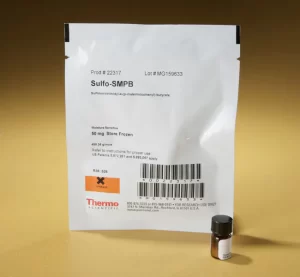
Thermo Scientific™ Sulfo-SMPB (sulfosuccinimidyl 4-(N-maleimidophenyl)butyrate)
$313.95 Add to cart View Product DetailsThermo Scientific™ Pierce Sulfo-SMPB is a water-soluble amine-to-sulfhydryl crosslinker that contains NHS-ester and maleimide reactive groups at opposite ends of a medium-length aromatic spacer arm (11.6 Ås).
Highlights:
- Extended chain length limits steric hindrance
- Water-soluble; membrane-impermeable
- Reactive groups: sulfo-NHS ester and maleimide
- Reactive toward: amino and sulfhydryl groups
-
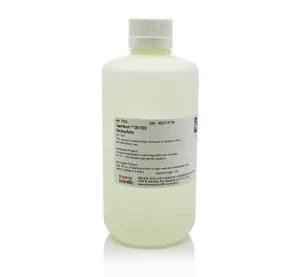
Thermo Scientific™ SuperBlock™ T20 (TBS) Blocking Buffer- SKU: 37536
$317.40 Add to cart View Product DetailsThermo Scientific™ SuperBlock Blocking Buffers are optimized PBS and TBS solutions containing a protein that provides incredibly fast and effective blocking for ELISA, immunohistochemistry and Western blotting applications.
nBlocking microplates, membranes or tissues with a SuperBlock Buffer yields a high signal-to-noise ratio in most detection systems. The protein-based formulation does not contain any immunoglobulins, albumin or endogenous biotin, making it compatible in many situations where traditional blocking agents fail. The buffer is especially effective at blocking coated polystyrene microplates (96-well plates) and stabilizing them for drying and storage for later use.nnHighlights:n
-
- Fast – block membranes in 5 to 10 minutes and ELISA plates in 2 minutes
-
- Flexible – guaranteed to be biotin-free for use with streptavidin system
-
- Convenience – available in multiple buffer formats (in PBS or TBS with or without Tween™-20 detergent) and package sizes (1L, 5L and dry-blend pouches)
-
- Low background – the non-serum protein solution yields a high signal-to-noise ratio
-
- Stable – store buffer at 4°C for one year; store blocked plates dry for up to 12 months
-
-
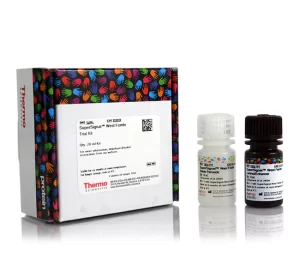
Thermo Scientific™ SuperSignal™ West Femto Maximum Sensitivity Substrate
$161.00 Add to cart View Product DetailsDescription
Thermo Scientific™ SuperSignal West Femto Substrate is an ultra-sensitive enhanced chemiluminescent substrate (ECL substrate) for detection of peroxidase activity from HRP-conjugated antibodies and probes in Western blotting.
nSuperSignal West Femto Substrate Maximum Sensitivity Substrate is an ultra-sensitive chemiluminescent substrate system for Western blotting with horseradish peroxidase (HRP) enzyme. The substrate kit enables detection of low femtogram (that’s mid-zeptomole!) amounts of protein deposited on nitrocellulose or PVDF membrane and probed with appropriate primary and secondary antibodies. When combined with optimized antibody concentrations and blocking buffers, SuperSignal West Femto Substrate enables detection of target proteins in amounts that are small to be seen with typical ECL substrates.nnHighlights:n
-
- n
- ECL substrate – an enhanced chemiluminescent substrate for detection of horseradish peroxidase (HRP) activity from antibodies and other Western blot probes
n
-
- Sensitive – detect low-femtogram (mid-zeptomole) amounts of protein in bands on nitrocellulose or PVDF membranes
n
-
- Quantitative – produces quantitative signal that is measurable over two orders of magnitude
n
-
- Saves on antibody – optimized for very dilute antibody concentrations; dilute primary antibodies 5000- to 100,000-fold and secondary antibodies 100,000 to 500,000-fold (from 1mg/mL stocks)
n
-
- Intense signal – easy to capture an image by exposure to autoradiography film or via a CCD camera or similar imaging system
n
-
- Excellent signal duration – 8 hours of usable light-output when conditions are optimized
n
-
- Stable reagent – kit components are stable for 1 year at 4°C or 6 months at room temperature
n
-
-
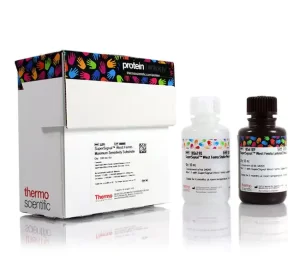
Thermo Scientific™ SuperSignal™ West Femto Maximum Sensitivity Substrate
$502.55 Add to cart View Product DetailsThermo Scientific™ SuperSignal West Femto Substrate is an ultra-sensitive enhanced chemiluminescent substrate (ECL substrate) for detection of peroxidase activity from HRP-conjugated antibodies and probes in Western blotting.
nSuperSignal West Femto Substrate Maximum Sensitivity Substrate is an ultra-sensitive chemiluminescent substrate system for Western blotting with horseradish peroxidase (HRP) enzyme. The substrate kit enables detection of low femtogram (that’s mid-zeptomole!) amounts of protein deposited on nitrocellulose or PVDF membrane and probed with appropriate primary and secondary antibodies. When combined with optimized antibody concentrations and blocking buffers, SuperSignal West Femto Substrate enables detection of target proteins in amounts that are small to be seen with typical ECL substrates.nnHighlights:n
-
- n
- ECL substrate – an enhanced chemiluminescent substrate for detection of horseradish peroxidase (HRP) activity from antibodies and other Western blot probes
n
-
- Sensitive – detect low-femtogram (mid-zeptomole) amounts of protein in bands on nitrocellulose or PVDF membranes
n
-
- Quantitative – produces quantitative signal that is measurable over two orders of magnitude
n
-
- Saves on antibody – optimized for very dilute antibody concentrations; dilute primary antibodies 5000- to 100,000-fold and secondary antibodies 100,000 to 500,000-fold (from 1mg/mL stocks)
n
-
- Intense signal – easy to capture an image by exposure to autoradiography film or via a CCD camera or similar imaging system
n
-
- Excellent signal duration – 8 hours of usable light-output when conditions are optimized
n
-
- Stable reagent – kit components are stable for 1 year at 4°C or 6 months at room temperature
n
-
-
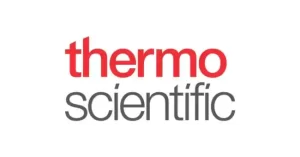
Thermo Scientific™ TMB Substrate Solution
$162.15 Add to cart View Product Details-
- Ready to use, no preparation required
n
-
- Validated for use with Thermo Scientific Pierce Matched Antibody Pairs and MiniKits
n
-
- Size: 100 mL (sufficient for about ten 96-well microplates)
n
-
-
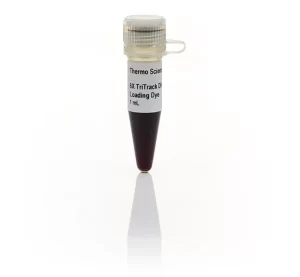
Thermo Scientific™ TriTrack DNA Loading Dye (6X)
$59.51 Add to cart View Product Details6X TriTrack DNA Loading Dye is used to prepare DNA markers and samples for loading on agarose or polyacrylamide gels. It contains three different dyes (bromophenol blue, xylene cyanol FF or orange G) for visual tracking of DNA migration during electrophoresis. The presence of glycerol ensures that the DNA in the ladder and sample forms a layer at the bottom of the well. The EDTA included in the solutions binds divalent metal ions and inhibits metal-dependent nucleases.nn6X TriTrack DNA Loading Dye is used for conventional DNA electrophoresis.
Highlights.
-
- Three-color tracking of DNA migration during DNA electrophoresis
n
-
- No DNA masking during gel exposure to UV light
n
-
- EDTA binds divalent metal ions and inhibits metal dependent nucleases
n
-
-
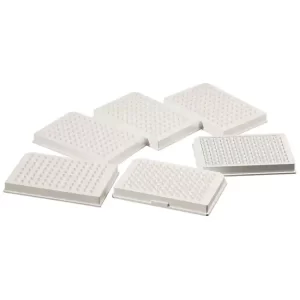
Thermo Scientific™ White 96-Well Immuno Plates
$497.25 Add to cart View Product DetailsConduct quantitative and qualitative immunoassays, like ELISA and binding assays, with Thermo Scientific™ White 96-Well Immuno Plates. These plates, which are compatible with common instruments, deliver optimal results, lot-to-lot reliability and well-to-well reproducibility. Features
-
- Plate has SBS footprint — fits standard equipment
n
-
- Available with flat- or round-bottom wells
n
-
- Choice of three surface types for optimal binding
n
-
- Certified binding homogeneity/reproducibility
n
nChoice of Surface:n
-
- n
- Thermo Scientific PolySorp, Microfluor 1, Microlite 1+ and Universal Binding (UB) for adsorption of hydrophobic molecules
n
-
- Thermo Scientific MaxiSorp is hydrophilic and ideal for antibody sandwich assays
n
-
- Thermo Scientific Microfluor 2 and Microlite 2+ are slightly hydrophilic and bind a diverse range of biomolecules
n
nWhite:n
-
- n
- Gives maximum reflection
n
-
- Minimum autofluorescence and autoluminescence
n
nCompatible with:nnLids for Thermo Scientific MicroWell plates, sealing tape and breathable membrane
-
-
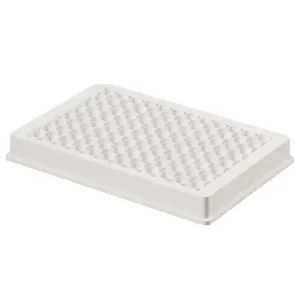
Thermo Scientific™ White 96-Well Immuno Plates
$458.62 Add to cart View Product DetailsConduct quantitative and qualitative immunoassays, like ELISA and binding assays, with Thermo Scientific™ White 96-Well Immuno Plates. These plates, which are compatible with common instruments, deliver optimal results, lot-to-lot reliability and well-to-well reproducibility.Features
-
- Plate has SBS footprint — fits standard equipment
n
-
- Available with flat- or round-bottom wells
n
-
- Choice of three surface types for optimal binding
n
-
- Certified binding homogeneity/reproducibility
n
nChoice of Surface:n
-
- n
- Thermo Scientific PolySorp, Microfluor 1, Microlite 1+ and Universal Binding (UB) for adsorption of hydrophobic molecules
n
-
- Thermo Scientific MaxiSorp is hydrophilic and ideal for antibody sandwich assays
n
-
- Thermo Scientific Microfluor 2 and Microlite 2+ are slightly hydrophilic and bind a diverse range of biomolecules
n
nWhite:n
-
- n
- Gives maximum reflection
n
-
- Minimum autofluorescence and autoluminescence
n
nCompatible with:nnLids for Thermo Scientific MicroWell plates, sealing tape and breathable membrane
-
-

Thermo Scientific™ White 96-Well Immuno Plates
$603.84 Add to cart View Product DetailsConduct quantitative and qualitative immunoassays, like ELISA and binding assays, with Thermo Scientific™ White 96-Well Immuno Plates. These plates, which are compatible with common instruments, deliver optimal results, lot-to-lot reliability and well-to-well reproducibility. Features
-
- Plate has SBS footprint — fits standard equipment
n
-
- Available with flat- or round-bottom wells
n
-
- Choice of three surface types for optimal binding
n
-
- Certified binding homogeneity/reproducibility
n
nChoice of Surface:n
-
- n
- Thermo Scientific PolySorp, Microfluor 1, Microlite 1+ and Universal Binding (UB) for adsorption of hydrophobic molecules
n
-
- Thermo Scientific MaxiSorp is hydrophilic and ideal for antibody sandwich assays
n
-
- Thermo Scientific Microfluor 2 and Microlite 2+ are slightly hydrophilic and bind a diverse range of biomolecules
n
nWhite:n
-
- n
- Gives maximum reflection
n
-
- Minimum autofluorescence and autoluminescence
n
nCompatible with:nnLids for Thermo Scientific MicroWell plates, sealing tape and breathable membrane
-
-

Thermo Scientific™ White 96-Well Immuno Plates
$586.55 Add to cart View Product DetailsConduct quantitative and qualitative immunoassays, like ELISA and binding assays, with Thermo Scientific™ White 96-Well Immuno Plates. These plates, which are compatible with common instruments, deliver optimal results, lot-to-lot reliability and well-to-well reproducibility. Features
-
- Plate has SBS footprint — fits standard equipment
n
-
- Available with flat- or round-bottom wells
n
-
- Choice of three surface types for optimal binding
n
-
- Certified binding homogeneity/reproducibility
n
nChoice of Surface:n
-
- n
- Thermo Scientific PolySorp, Microfluor 1, Microlite 1+ and Universal Binding (UB) for adsorption of hydrophobic molecules
n
-
- Thermo Scientific MaxiSorp is hydrophilic and ideal for antibody sandwich assays
n
-
- Thermo Scientific Microfluor 2 and Microlite 2+ are slightly hydrophilic and bind a diverse range of biomolecules
n
nWhite:n
-
- n
- Gives maximum reflection
n
-
- Minimum autofluorescence and autoluminescence
n
nCompatible with:nnLids for Thermo Scientific MicroWell plates, sealing tape and breathable membrane
-
-
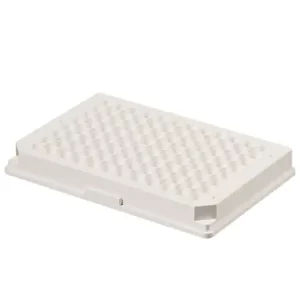
Thermo Scientific™ White 96-Well Immuno Plates
$571.49 Add to cart View Product DetailsConduct quantitative and qualitative immunoassays, like ELISA and binding assays, with Thermo Scientific™ White 96-Well Immuno Plates. These plates, which are compatible with common instruments, deliver optimal results, lot-to-lot reliability and well-to-well reproducibility.
Features
-
- Plate has SBS footprint — fits standard equipment
n
-
- Available with flat- or round-bottom wells
n
-
- Choice of three surface types for optimal binding
n
-
- Certified binding homogeneity/reproducibility
n
nChoice of Surface:n
-
- n
- Thermo Scientific PolySorp, Microfluor 1, Microlite 1+ and Universal Binding (UB) for adsorption of hydrophobic molecules
n
-
- Thermo Scientific MaxiSorp is hydrophilic and ideal for antibody sandwich assays
n
-
- Thermo Scientific Microfluor 2 and Microlite 2+ are slightly hydrophilic and bind a diverse range of biomolecules
n
nWhite:n
-
- n
- Gives maximum reflection
n
-
- Minimum autofluorescence and autoluminescence
n
nCompatible with:nnLids for Thermo Scientific MicroWell plates, sealing tape and breathable membrane
-
-

Thermo Scientific™ White 96-Well Immuno Plates
$567.77 Add to cart View Product DetailsConduct quantitative and qualitative immunoassays, like ELISA and binding assays, with Thermo Scientific™ White 96-Well Immuno Plates. These plates, which are compatible with common instruments, deliver optimal results, lot-to-lot reliability and well-to-well reproducibility.
Features
-
- Plate has SBS footprint — fits standard equipment
n
-
- Available with flat- or round-bottom wells
n
-
- Choice of three surface types for optimal binding
n
-
- Certified binding homogeneity/reproducibility
n
nChoice of Surface:n
-
- Thermo Scientific PolySorp, Microfluor 1, Microlite 1+ and Universal Binding (UB) for adsorption of hydrophobic molecules
n
-
- Thermo Scientific MaxiSorp is hydrophilic and ideal for antibody sandwich assays
n
-
- Thermo Scientific Microfluor 2 and Microlite 2+ are slightly hydrophilic and bind a diverse range of biomolecules
n
nWhite:n
-
- Gives maximum reflection
n
-
- Minimum autofluorescence and autoluminescence
n
Compatible with: Lids for Thermo Scientific MicroWell plates, sealing tape and breathable membrane
-
-
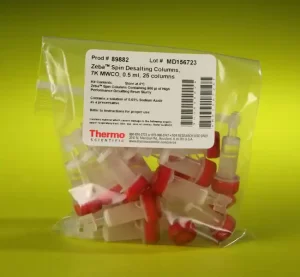
Thermo Scientific™ Zeba™ Spin Desalting Columns, 7K MWCO, 0.5 mL- SKU: 89883
$339.25 Add to cart View Product DetailsThermo Scientific™ Zeba Spin Desalting Columns (7K MWCO) contain a size-exclusion chromatography resin that provides excellent protein desalting performance in a centrifuge format for 2µL to 4mL samples.
nThese specially designed polypropylene centrifuge columns are pre-packed with high-performance Zeba Desalting Resin to facilitate rapid protein desalting with high recovery. The resin effectively traps salts and other small sample components but does not impede proteins and other macromolecules, which pass directly into the centrifuge collection tube. These particular columns use Zeba Resin having a molecular-weight cutoff (MWCO) rating equal to 7K; this ensures that proteins larger than 7000 MW will be recovered with high efficiency.nnThe easy-to-use spin column format dramatically improves results over standard drip-column methodologies. This system eliminates the need to wait for samples to emerge by gravity flow and to monitor fractions for protein recovery. Samples are processed in these desalting columns using a standard centrifuge or microcentrifuge. No chromatography hardware or column preparation steps are required. Multiple samples can be processed in less than 10 minutes. Zeba Spin Desalting Columns are available in five different column sizes, and these provide trouble-free desalting and buffer exchange for sample volumes ranging from 2µL to 4mL
Highlights:
-
- Fast centrifuge format – resin and columns are optimized for rapid processing by centrifugation with standard collection tubes and rotors
-
- Replaces drip-column methods – no need to collect and screen slowly emerging protein fractions
-
- Exceptional protein yields – recover greater than 95% in typical applications with minimal dilution
-
- Five convenient sizes – columns with 75µL to 10mL of Zeba Resin provide desalting matched for sample volumes between 2µL and 4mL
-
- 7K MWCO – resin is rated to recover proteins larger than 7000 daltons and retain (remove) solutes smaller than 1000 MW
Requires:nnMicrocentrifuge and microcentrifuge collection tubes (for 75µL and 0.5mL columns) or centrifuge and collection tubes (15mL tubes for 2 and 5mL columns; 50mL tubes for 10mL columns)
-
-
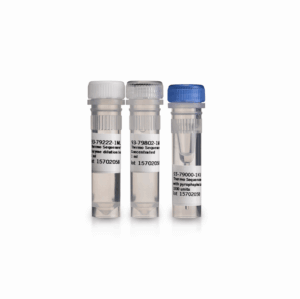
THERMO SEQUENASE DNA 10000UN POLYMERASE, 10000U
$8,561.59 Add to cart View Product DetailsTHERMO SEQUENASE DNA 10000UN POLYMERASE, 10000U
-
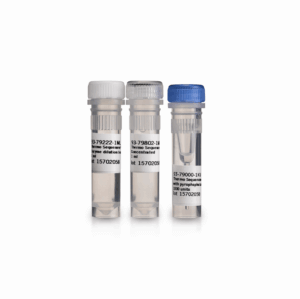
THERMO SEQUENASE DNA POLYMERASE, 1000U
$1,318.63 Add to cart View Product DetailsTHERMO SEQUENASE DNA POLYMERASE, 1000U
-
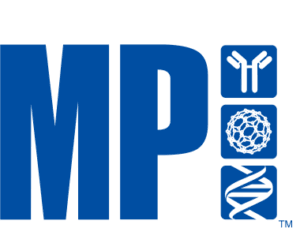
Thermolysin
$436.43 Add to cart View Product DetailsThis lyophilized enzyme is from Bacillus thermoproteolyticus. This enzyme is characterized by its excellent heat stability and substrate specificity towards isoleucine, methionine and valine. Activity: 7000 PU/mg of protein.
-
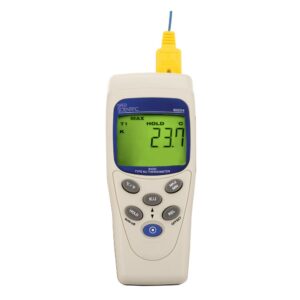
Thermometer Basic Type K/J
$94.56 Add to cart View Product DetailsThermometer Basic Type K/J
-
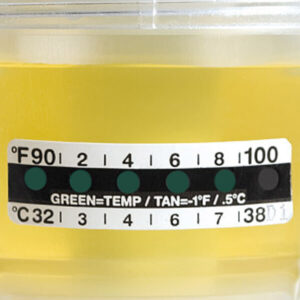
Thermometer strip, adhesive
$106.78 Add to cart View Product Detailsfahrenheit & celsius
-

Thermometer strip, adhesive
$707.60 Add to cart View Product Detailsfahrenheit & celsius
-
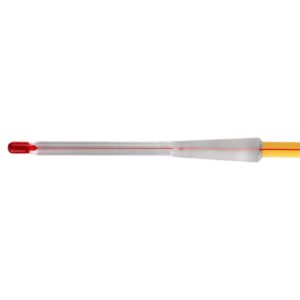
Thermometer Taper Joint -10 to 150C 125mm
$16.45 Add to cart View Product DetailsThermometer Taper Joint -10 to 150C 125mm
-
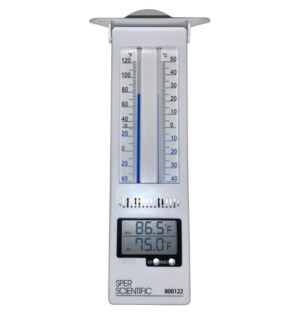
Thermometer w/ Digital Min/Max Display
$15.62 Add to cart View Product DetailsThermometer w/ Digital Min/Max Display
-

THIAMINE CONTROL DIET, Modified
$602.23 Add to cart View Product DetailsTHIAMINE CONTROL DIET, Modified
-

THIAMINE CONTROL DIET, Modified
$1,049.10 Add to cart View Product DetailsTHIAMINE CONTROL DIET, Modified
-

THIAMINE CONTROL DIET, Modified
$2,284.67 Add to cart View Product DetailsTHIAMINE CONTROL DIET, Modified
1,986.67 -

Thiamine control diet, modified
$663.25 Add to cart View Product DetailsThiamine Control Diet, Modified
-

Thiamine control diet, modified
$1,159.96 Add to cart View Product DetailsThiamine Control Diet, Modified
1,008.66 -

Thiamine control diet, modified
$2,528.38 Add to cart View Product DetailsThiamine Control Diet, Modified
2,198.59 -

THIAMINE DEFICIENT DIET, Modified
$602.23 Add to cart View Product DetailsTHIAMINE DEFICIENT DIET, Modified
-

THIAMINE DEFICIENT DIET, Modified
$1,049.10 Add to cart View Product DetailsTHIAMINE DEFICIENT DIET, Modified
-

THIAMINE DEFICIENT DIET, Modified
$2,284.67 Add to cart View Product DetailsTHIAMINE DEFICIENT DIET, Modified
1,986.67 -

Thiamine deficient diet, modified
$631.67 Add to cart View Product DetailsThiamine Deficient Diet, Modified
-

Thiamine deficient diet, modified
$1,083.46 Add to cart View Product DetailsThiamine Deficient Diet, Modified
-

Thiamine deficient diet, modified
$2,361.61 Add to cart View Product DetailsThiamine Deficient Diet, Modified
2,053.57 -

Thiamine hydrochloride, cell culture reagent
$50.11 Add to cart View Product DetailsThiamine Hydrochloride
-

Thiamine hydrochloride, cell culture reagent
$102.97 Add to cart View Product DetailsThiamine Hydrochloride
-

Thiamine hydrochloride, cell culture reagent
$204.82 Add to cart View Product DetailsThiamine Hydrochloride
-

Thiamine, hydrochloride
$45.36 Add to cart View Product DetailsThiamine, Hydrochloride
-

Thiamine, hydrochloride
$64.85 Add to cart View Product DetailsThiamine, Hydrochloride
-

Thiamine, hydrochloride
$141.78 Add to cart View Product DetailsThiamine, Hydrochloride
-

Thiamine, hydrochloride
$386.49 Add to cart View Product DetailsThiamine, Hydrochloride
-

Thiamphenicol
$149.34 Add to cart View Product DetailsThiamphenicol
-

Thiamphenicol
$565.19 Add to cart View Product DetailsThiamphenicol
